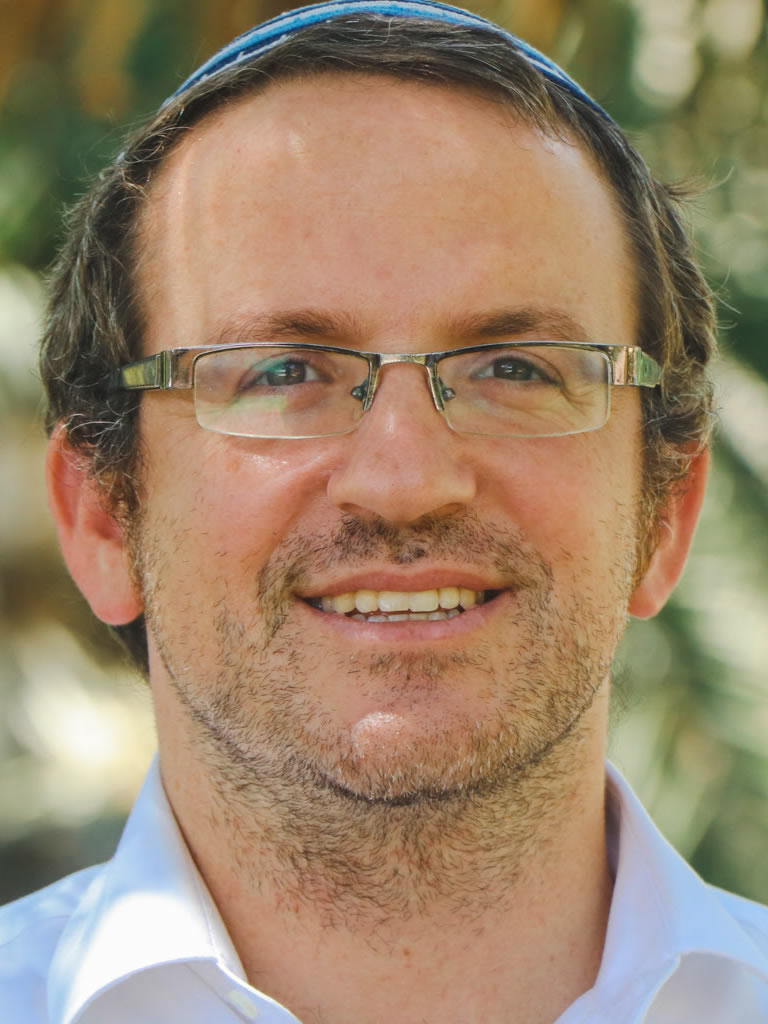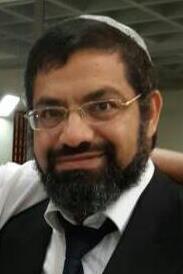The Educational Messages in the Vessels of the Mishkan
הרב יצחק ג'מאל
When the weekly Torah portions turn to the subject of the vessels of the Mishkan, many people find it difficult to read them with interest and enthusiasm because the Mishkan and its vessels seem very far from their world and not relevant to our generation. In this writing, I would like to bring to light several educational ideas which we can learn from the service of the Mishkan, ideas which are relevant to all of us with regard to the education of the next generation, whether in our role as parents, teachers or youth-movement leaders.
The Parsha opens with the command of lighting the Menorah: "And you shall command B'nei Israel and they will bring you pure beaten olive oil to light the eternal candle (Shemot 27:20)." Rashi, in accordance with the Gemara, explains the Torah's use of the expression leha'alot: "To cause the eternal candle to rise – he lights, until the flame rises on its own." In fact, the Torah changed the term "to light" to "to cause to rise" in order to teach us a law regarding the process of lighting, and the question arises: everyone who lights a candle knows that it has to be lit until the flame takes hold of the wick and it burns on its own, so what special chiddush is revealed to us here? Evidently there is a deeper underlying message.
The Gemara tells us in Masechet Baba Bathra (25b): "He who desires to become wise should turn to the south (direct his prayer to the south) and he who desires to become wealthy should turn to the north (direct his prayer to the north). And your signs are: The Menorah is at the south and the Shulchan (table) is at the north (of the Mishkan)" From this we learn that the Menorah is the symbol of wisdom, the symbol of Torah and spirituality. In contrast, the table is the symbol of wealth, of materialism. If so, regarding the issue at hand, we can say that through the lighting of the Menorah, the Torah teaches us that when we want to pass the tradition on to the next generation, the way to do this is "until the flame rises on its own." When you want to light the soul of your student, apply yourself until his fire burns of his own strength – meaning that it will continue to light from his "oil" even after you remove your "match." This is in the spirit of "A wise man will hear and will add learning (Mishlei 1:5)" meaning that a successful student will continuously become wiser by virtue of the learning tools he has acquired. To the contrary, if you teach a student and he learns only what you have taught him, then he is merely a "translator."
HaRav Chaim Shmuelevitz of blessed memory used to say that a good student doesn't only know how to quote his Rav on every sugiyah (subject) but also knows what his Rav would have said on a new subject about which he hasn't heard a lesson from his Rav. This demonstrates that he has understood his Rav's method and direction, and therefore he can handle any new question or subject which come his way.
Based on this, we can reconcile two seemingly conflicting accounts describing the behavior of Rabbi Eliezer. The Gemara in Masechet Yoma (66b) tells that Rabbi Eliezer's students asked him several questions and he avoided answering all of them, and the Gemara concludes: "Not that he evaded answering because he didn't know the answers (since in fact he knew) but because he wouldn't say anything which he hadn't previously heard from his Rav."
In contrast, the following appears in Avot d'Rabbi Natan: "They said: on that day Rabban Yochanan Ben Zakkai gazed upon Rabbi Eliezer and said to him: Open (the discourse). Enlighten us with new insights. He answered: I cannot open. Rabban Yochanan and the students pressured him, so he opened and enlightened with insights which no ear had ever heard before. For each and every thing which came out of his mouth, Rabban Yochanan Ben Zakkai stood up on his feet and kissed him on his head."
By virtue of the explanation of HaRav Shmuelevitz, we can reconcile these two stories by explaining that Rabbi Eliezer didn't say anything that he didn't previously hear from his Rabbis, but he internalized their direction and technique, and according to them he said things which were never heard before. It is probable that all the other talmidim heard the discourses of the Rabbis, but only he understood and applied their direction well enough to be able to make new insights accordingly. As long as student isn't confident in himself and still requires the constant support of his Rav, this means that the process of his education is not yet complete. When he reaches the point that his flame rises on its own, this proves that his education was successful.
From here we will move on to another mitzvah, which at first glance is somewhat difficult to understand. The Torah says regarding the Choshen and the Ephod: "And they will attach the Choshen by its rings to the rings of the Ephod with a blue string, in order that it will be on the woven strap of the Ephod and the Choshen will not move off the Ephod. (Shemot 28:28)" In order to keep the Choshen from moving from its place on the Ephod, an entire system of rings is made to keep the two garments together. The commentators already wondered: why is this necessary and so important? The question becomes stronger in light of the Rambam's words in Sefer HaMitzvot: "And the 87th mitzvah is a warning not to move the Choshen off the Ephod, and this is what the Exalted One said (Tetzaveh 28) 'and the Choshen will not move off the Ephod'… and at the end of Masechet Makkot (22a), they also mentioned, together with those (sinners) who are punishable by flogging: he who removes the Choshen. And its warning is from here: 'and the Choshen will not move off.' Therefore it becomes clear that one who removes it is flogged." And Sefer HaChinuch gives the reason for this (Mitzvah 100) and says that the need for this is simply "an aesthetic issue" – since the Mikdash is the holiest place in the world, everything there must be arranged perfectly, and when there is a deficiency in the garments of the Cohen then this is a deficiency in the beauty of the Mikdash, which must also be evident in the Cohanim who serve there.
The author of Sefer HaChinuch himself writes that this explanation is a bit hard-pressed, and concludes that he will hold by this explanation until another one will be found: "And until we will hear a better one than this – we will hold by it."
I once heard an explanation for this according to the simple meaning of the verses: "And Aharon will bear the names of B'nei Israel on Choshen HaMishpat (the breastplate of judgement) upon his heart when he enters the sanctuary as a constant remembrance before HaShem. And you shall put the Urim and the Tummim in Choshen HaMishpat and they will be upon Aharon's heart when he comes before HaShem, and Aharon will bear the judgement of B'nei Israel upon his heart constantly before HaShem (28:29-30)." The Cohen Gadol represents Am Israel, and he must be the spiritual figure who educates the nation, and he must know that when he enters the sanctuary, he is entering in the name of all of Am Israel, and he cannot break his concentration from his nation. Therefore the Choshen must be connected to the Ephod, always on the Cohen's heart. From this every educator can learn that his students must always be in his heart, even when he is not teaching them, but also when he is elsewhere and attending to other things.
We will conclude with the words of the Gemara in Babba Bathra (8b) which describe the personality of Rabbi Shmuel Bar Shilat as the ideal teacher of children: "'And those who bring the masses to righteousness are like the stars forever (Daniel 12:3)' – these are the teachers of children. Like whom? Rav said: like Rav Shmuel Bar Shilat. One time Rav saw Rav Shmuel Bar Shilat in a garden and asked him: have you abandoned those who are entrusted to you (your pupils)? He answered him: I haven't seen the garden for thirteen years and even now my thoughts are upon them." Rav Shmuel Bar Shilat was completely occupied with his students thirteen years and didn't have time to see his garden, and even when he found the time to go there, his mind was upon them. This is the model of the ideal educator, whose heart and thoughts are always on his students, and he never takes his mind off them even when he is involved with his own affairs.
May we merit to educate and to educate ourselves in this way, Amen.
השיעור ניתן בי"ד אדר תשפ"ד
קוד השיעור: 9376
לשליחת שאלה או הארה בנוגע לשיעור:




.jpg)

